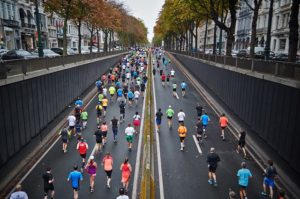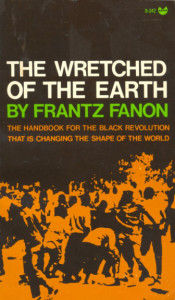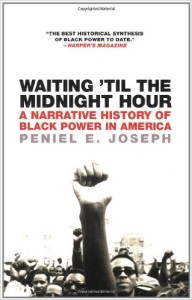How to Jog During Extreme Weather: Summer Edition
 Last Sunday I ran a 5K race in the middle of a rainstorm. At the beginning of the race it was just sprinkling, but the rain came down progressively harder during the course. Although I brought a light raincoat with me, I opted at the last minute to not wear it during the race to test out my endurance, and I am glad I did that.
Last Sunday I ran a 5K race in the middle of a rainstorm. At the beginning of the race it was just sprinkling, but the rain came down progressively harder during the course. Although I brought a light raincoat with me, I opted at the last minute to not wear it during the race to test out my endurance, and I am glad I did that.
When I first started to do recreational jogging over 10 years ago, I almost always went to the gym or even didn’t exercise at all because I worried about the weather interfering with my workout.
It’s too hot… It’s too cold… There is too much snow and ice… It’s rainy…
Excuses, excuses, excuses…
Over the years I have had to overcome these so-called barriers designed by Mother Nature in order to become a better runner. Nonetheless, with trying weather patterns, one has to change their running habits to acclimate to the situation. For instance, during this race I ran at a slower than usual pace mainly to avoid slipping and falling. Also, because I wear prescription glasses full time, the rain made it a little harder to see in front of me, so a slower run to wipe down my glasses and not bump into other runners was necessary.
Some of my friends thought I was crazy to even do the rainy race, especially a couple of my black female friends who are worried about my “hair situation.” I didn’t have a “situation” with my hair, as water is the best moisture black hair can get, thank you very much!
But even on a non-rainy day in the summer, there are still things runners have to do differently to avoid other problems. Here are some tried-and-true suggestions I have learned from my years of running during hot weather months.
Get up really early to run – I usually start my jogs in the summertime around 5AM. Mornings are usually the coolest parts of the day. During heatwaves I will go to bed early the night before and get up at 3 or 4 in the mornings to get my runs in for the day. If it is still too hot that early in the morning and if I am having a hard time breathing during my runs outside, then I head to my nicely air-conditioned gym! If you can’t run in the mornings, late evenings are okay too.
Watch where you run – A lot of us urbanites have to run in a concrete and asphalt jungle of brick buildings, sidewalks and streets that tend to retain more heat during the hot months. This is another reason to run in early mornings because sidewalks and streets are a little cooler during that time of the day. If you live near a park or a hiking trail, running on dirt or grass can be a better alternative. Also, if you are lucky to live near water – river, lake, pond, ocean, pothole with water puddle (just kidding), you can usually get a cooler breeze while running. Water can be really meditative. Running along a path where there are drinking water fountains along the route is a good idea to stay hydrated. Jogging into the wind also has a cooling effect if there happens to be wind when you are running, especially if you run against it.
Wear light clothing – Don’t wear bulking clothes. Less is more! Lightweight, moisture-wicking clothing will help your body breathe during those warm runs. Also, wearing dark colors will actually attract heat, so stick with light colors. If you do runs during the day, wear a baseball cap, sunglasses and sunscreen and run in or near the shade.
Drink water – You should always drink water before, during and after runs. This becomes even more important during hot weather as your body is more prone to dehydration and heat stroke.
Eat something – I usually run 3 or 4 miles in 30 minutes so I might eat half of a Clif Bar 20 minutes before my run. But usually because it is such a short run and it is early morning run, you don’t need to really eat anything beforehand, since your body will be using the natural energy that was stored in your body during your sleep the night before. When I get home then I make sure I have a good protein and iron rich breakfast, like oatmeal or Wheaties with soy milk and a slice of Ezekiel bread. If you are doing longer runs, you might need to do more pre-run eating.
Run slower – There is no shame in running at a slower pace in hot weather, especially at the beginning of your run. It’s better to be somewhat physically active than to not be active at all!
Understand your body – While it is good to practice endurance running, if your body is saying “not today,” then heed to your natural instincts and not run if the weather is too much for you. Do an alternative indoor activity instead, like pool running.


